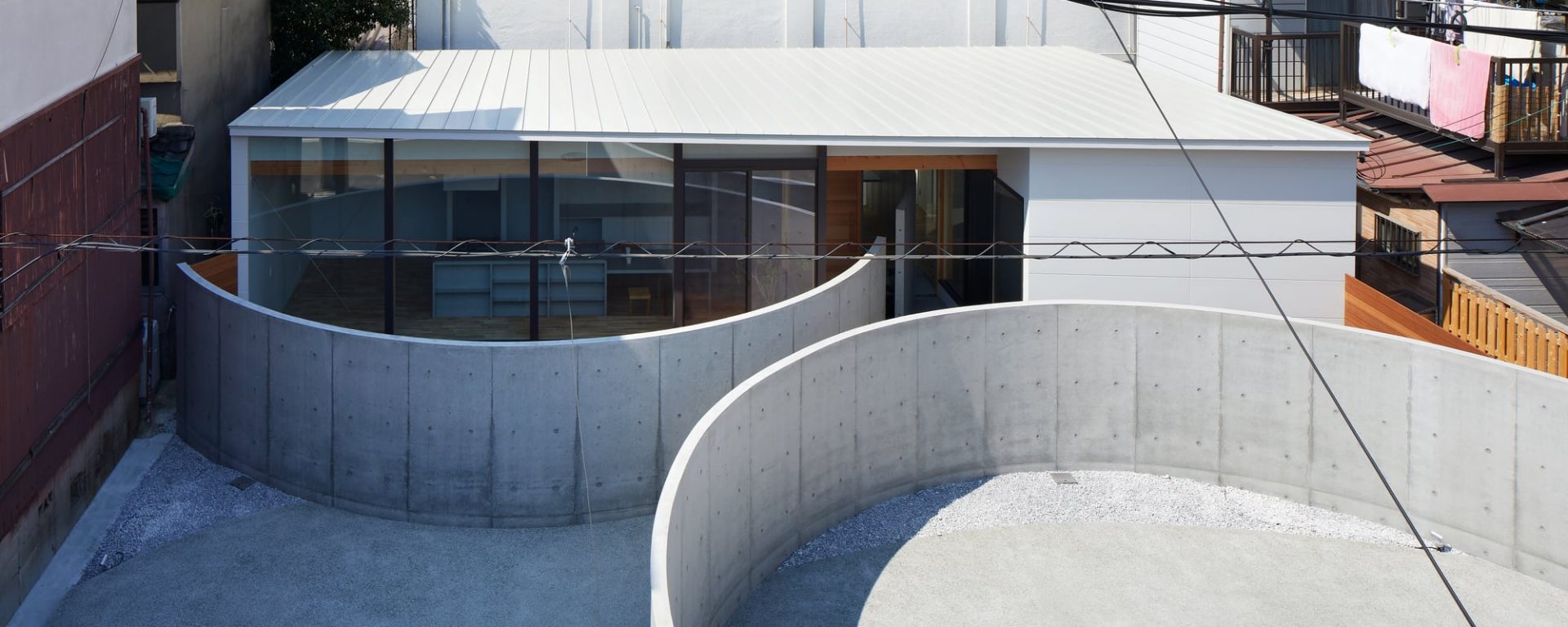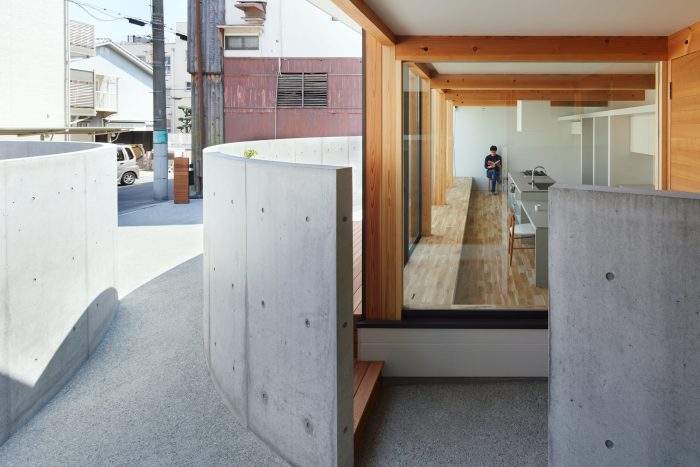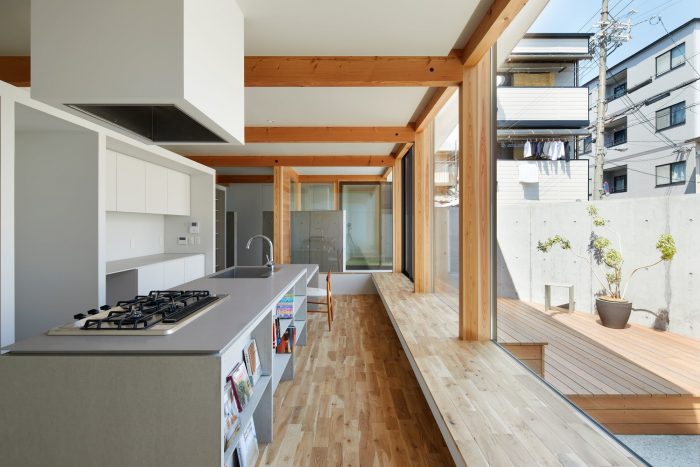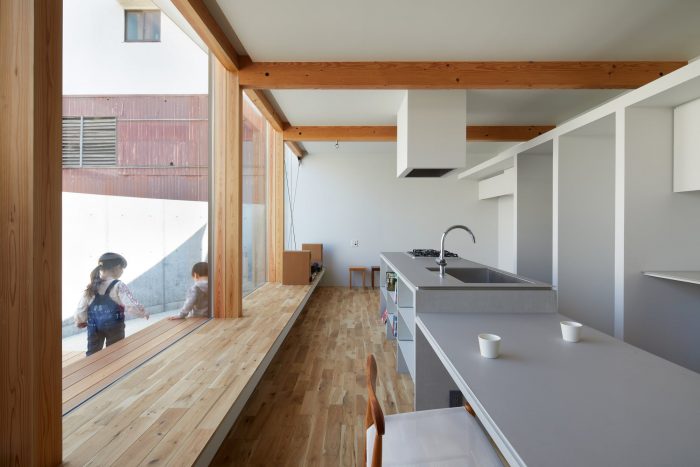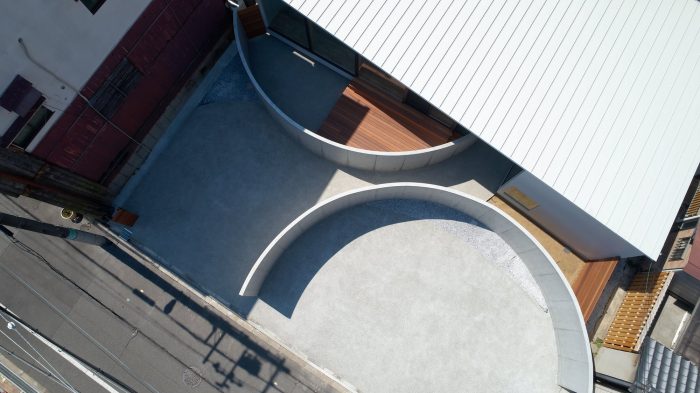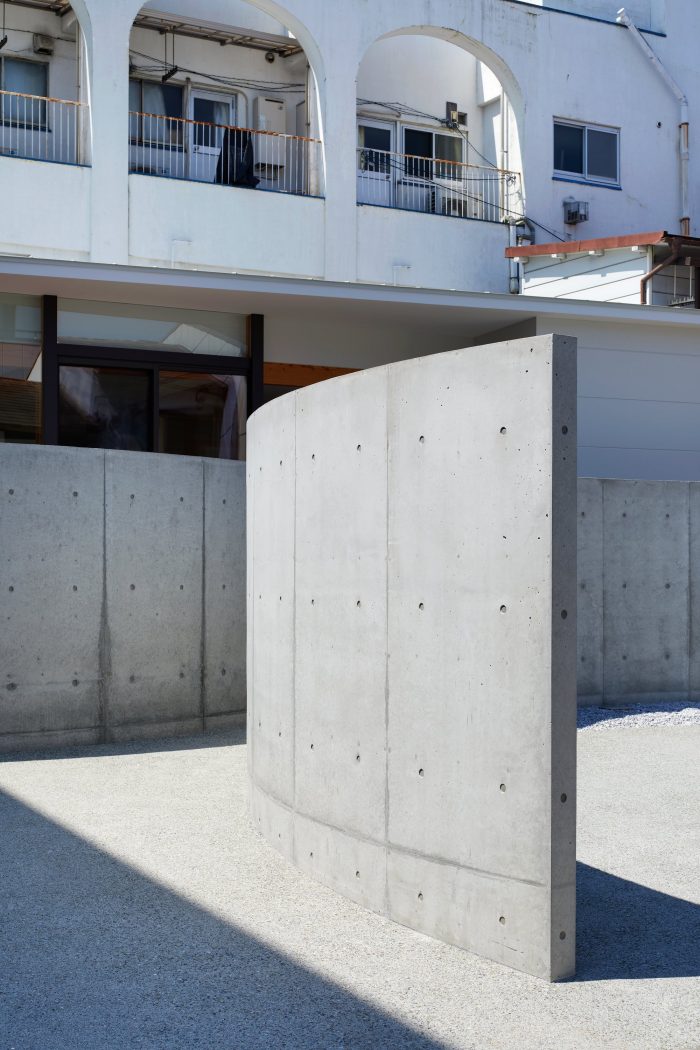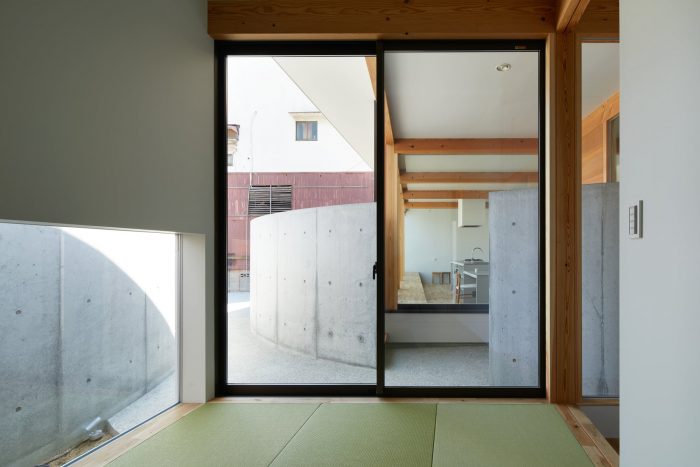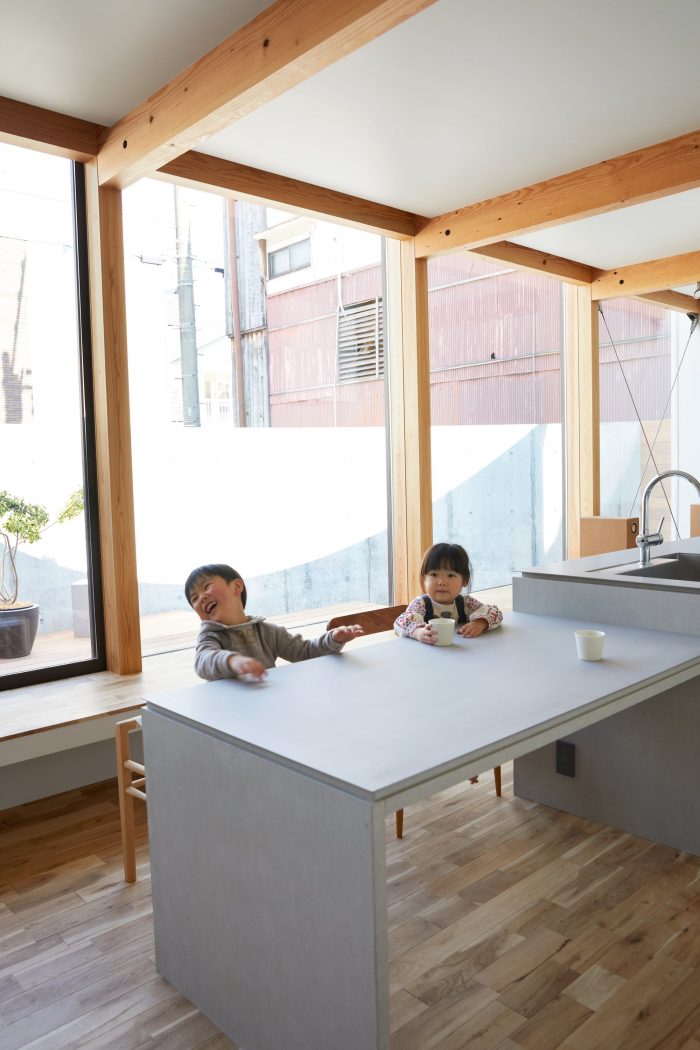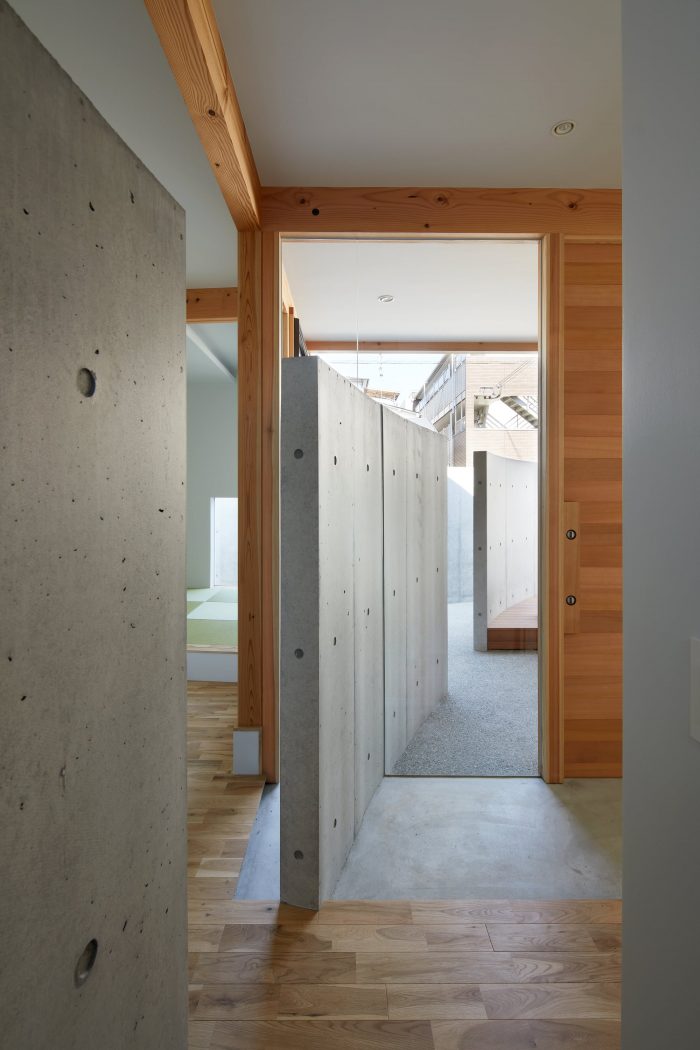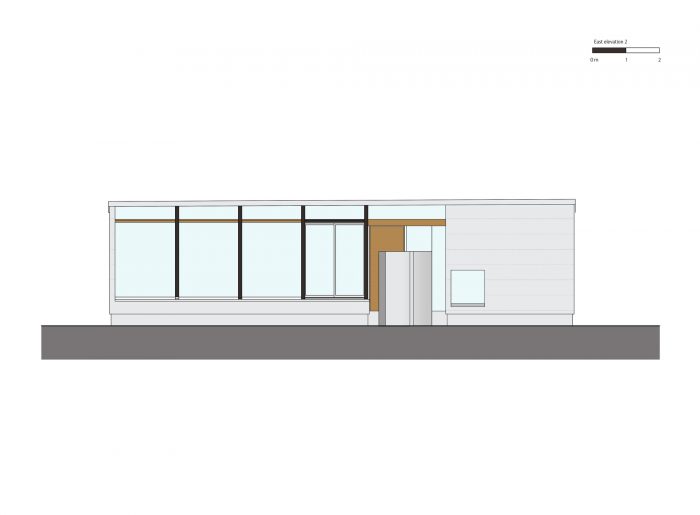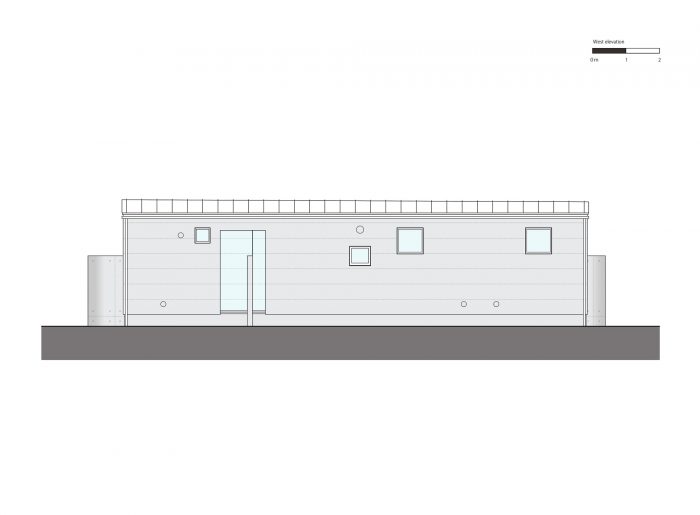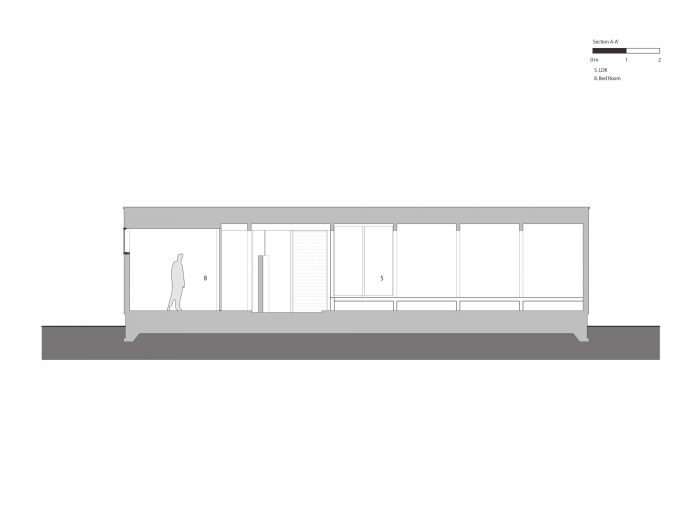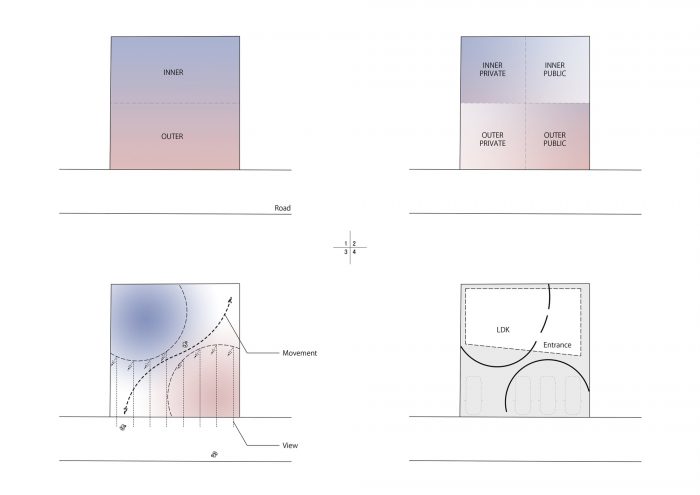尽管这栋位于大阪老城区的住宅坐落在一块相对较大的土地上,但客户希望保留部分房产作为一个三车位的公共停车场,他们希望将来能在这里运营。将这个 “公共 “区域与住宅的 “私人 “区域适当地分开是这个项目的核心主题。设计一种方法将道路和邻近房产的 “外部 “区域与地段本身的 “内部 “区域分开,也是像这样位于相对较大房产的项目的一个长期主题。
Although this residence in Osaka’s old town district sits on a relatively large lot, the clients wanted to reserve part of the property for a three-space public parking lot they hope to operate there in the future. Appropriately dividing this “public” zone from the “private” zone of the home was a central theme of the project. Devising a way to separate the “outer” zone of the road and neighboring properties from the “inner” zone of the lot itself is also a perennial theme in projects like this that are situated on relatively large properties.
通常情况下,墙被用来划分区域,而大阪的这一地区充满了这样的墙,将公共和私人以及外部和内部分开。我们总是对如何使这些构成街景的一个组成部分的墙体更有吸引力感兴趣。我们不想严格地隔离各个区域,而是想创造一条柔和的、有吸引力的边界线,将它们分割开来,有时阻挡视线,有时邀请人们进入。
Typically, walls are used to divide zones, and this part of Osaka is full of such walls separating public from private and outer from inner. We are always interested in how to make these walls that form such an integral part of the streetscape more appealing. Rather than strictly segregating various zones, we wanted to create a soft, attractive boundary line that segmented them, sometimes blocking lines of sight and sometimes inviting people in.
我们的解决方案是用两面弧形的混凝土墙将该物业划分为几个区。我们将由此产生的四个区域按私密性降序定义为 “外部公共”、”外部私人”、”内部公共 “和 “内部私人”。外层公共区包含停车场;外层私人区包含住户的停车位和通道;内层公共区包含入口处、招待客人的日式房间、卫生间浴室和其他更多的外围空间;内层私人区包含开放的生活-餐厅-厨房区和庭院,家人在这里度过大部分时间。
Our solution was to divide the property into quarters using two arced concrete walls. We defined the four resulting zones in descending order of privacy as “outer public,” “outer private,” “inner public,” and “inner private.” The outer public zone contains the parking lot; the outer private zone contains a parking space for the residents and the approach; the inner public zone contains the entryway, Japanese-style room for entertaining guests, WCbathrooms, and other more peripheral spaces; and the inner private zone contains the open living-dining-kitchen area and courtyard where the family spend most of their time.
两面拱形墙的设计将外部的私人空间和内部的公共空间轻轻地联系起来,将居民吸引到内部。另一方面,这两面墙挡住了从街上进入住宅的视线,在需要的地方保持完全的隐私,同时允许从入口处瞥见入口处和日式房间。其中一面墙延伸到住宅内部,成为室内的分隔墙。因此,这些墙没有隔离公共、私人、外部和内部区域,而是引导人们在空间中移动,交替地阻挡和邀请视线,并作为日常生活的一个组成部分存在。
The design of the two arced walls gently links the outer private and inner public spaces, drawing the residents inside. On the other hand, the two walls block views into the home from the street, maintaining complete privacy where it is desired while allowing a glimpse of the entryway and Japanese-style room from the approach. One of the walls extends inside the residence, becoming an interior dividing wall. The walls thus do not segregate public, private, outer, and inner zones, but instead, guide the movement of people through the space, alternately block and invite lines of sight, and exist as an integrated component of daily life.
Architects: FujiwaraMuro Architects
Area : 91 m²
Year : 2019
Photographs :Toshiyuki Yano
Manufacturers : KOUSEI, LIXIL
Lead Architects : Shintaro Fujiwara, Yoshio Muro
City:OSAKA
Country:Japan

